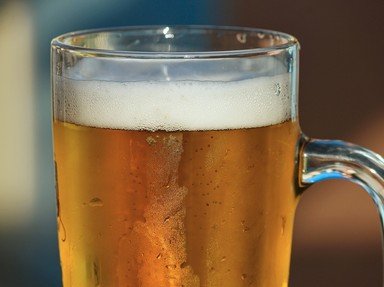Quiz Answer Key and Fun Facts
1. What is the term for the process of steeping malted grains to start the conversion of their starches into sugars?
2. Name the off-flavor in beer often characterized as "butter," "butterscotch" and/or "buttered popcorn."
3. Name the yeast type often used in Lambics, Wild Ales, and Geuezes?
4. What kind of beer is a Schwarzbier considered to be?
5. What Belgian ale style typically uses spices like coriander and orange peel?
6. From the start of the brewing process to the finished product, lagers take longer to produce than ales.
7. Choose the correct order for hop additions and their purpose.
8. It is perfectly fine to brew and ferment "normal" beer and "wild ale" using the same equipment for both.
9. "Chill haze" affects the following in the finished beer:
10. At what part of the brewing process is the yeast pitched for initial fermentation?
Source: Author
beermepodcast
This quiz was reviewed by FunTrivia editor
WesleyCrusher before going online.
Any errors found in FunTrivia content are routinely corrected through our feedback system.


